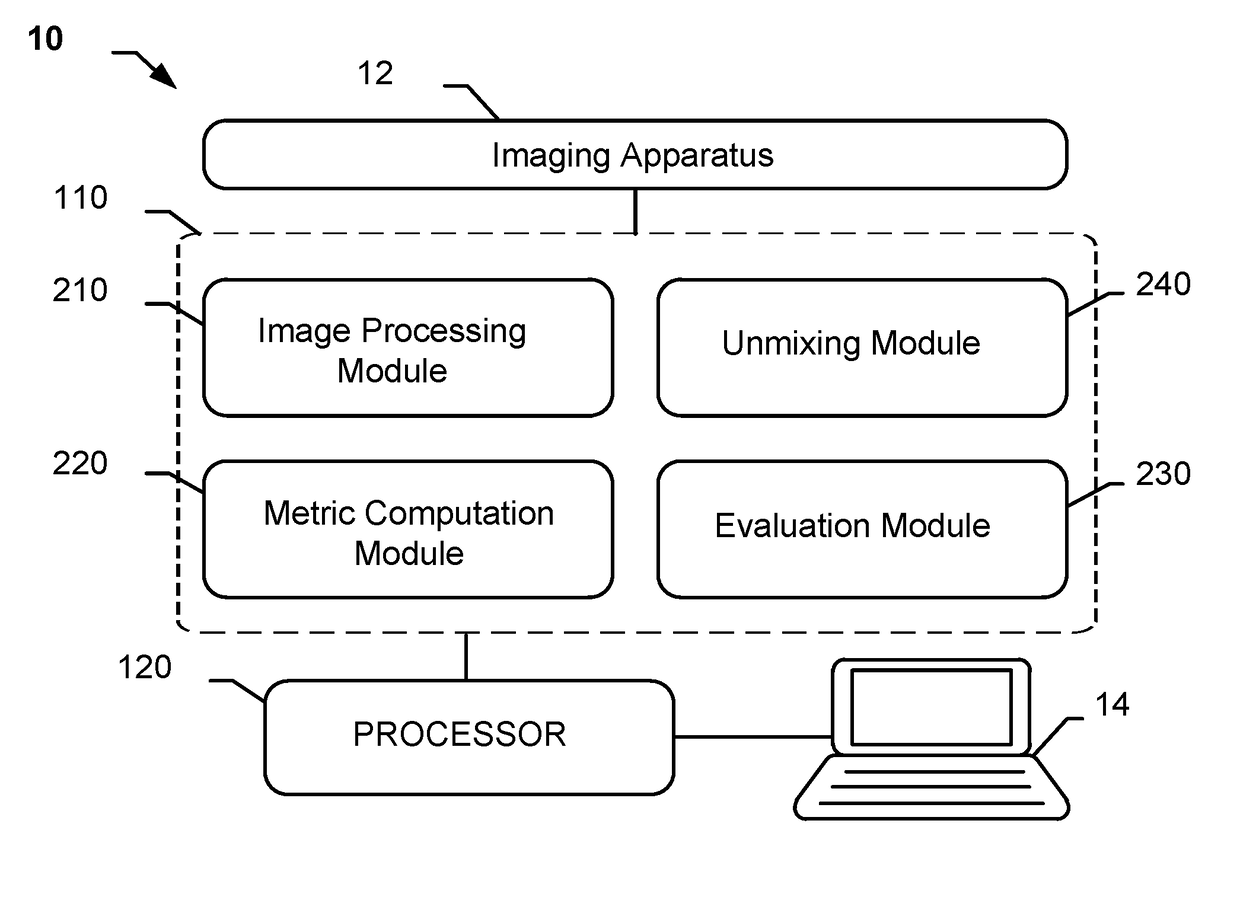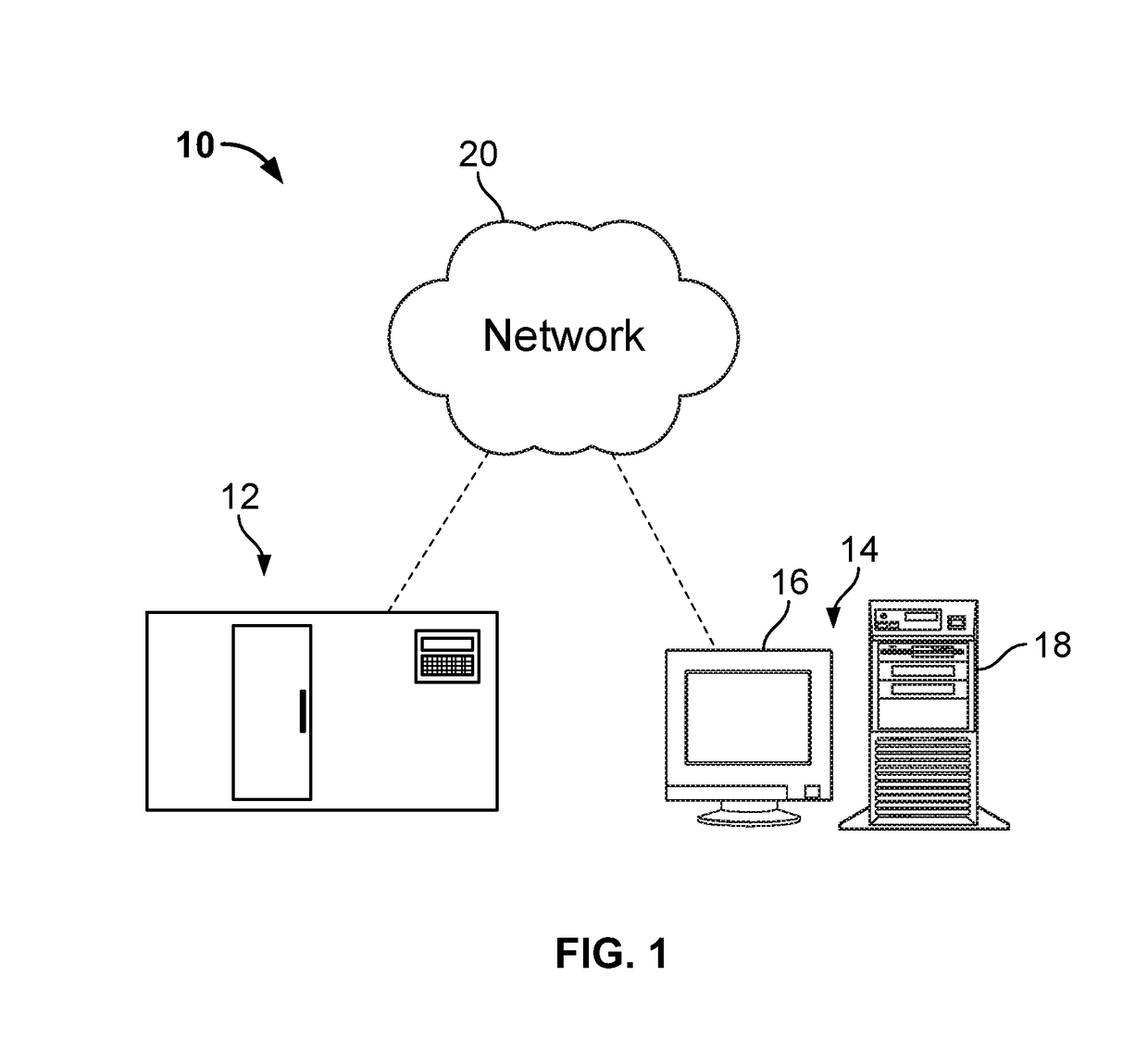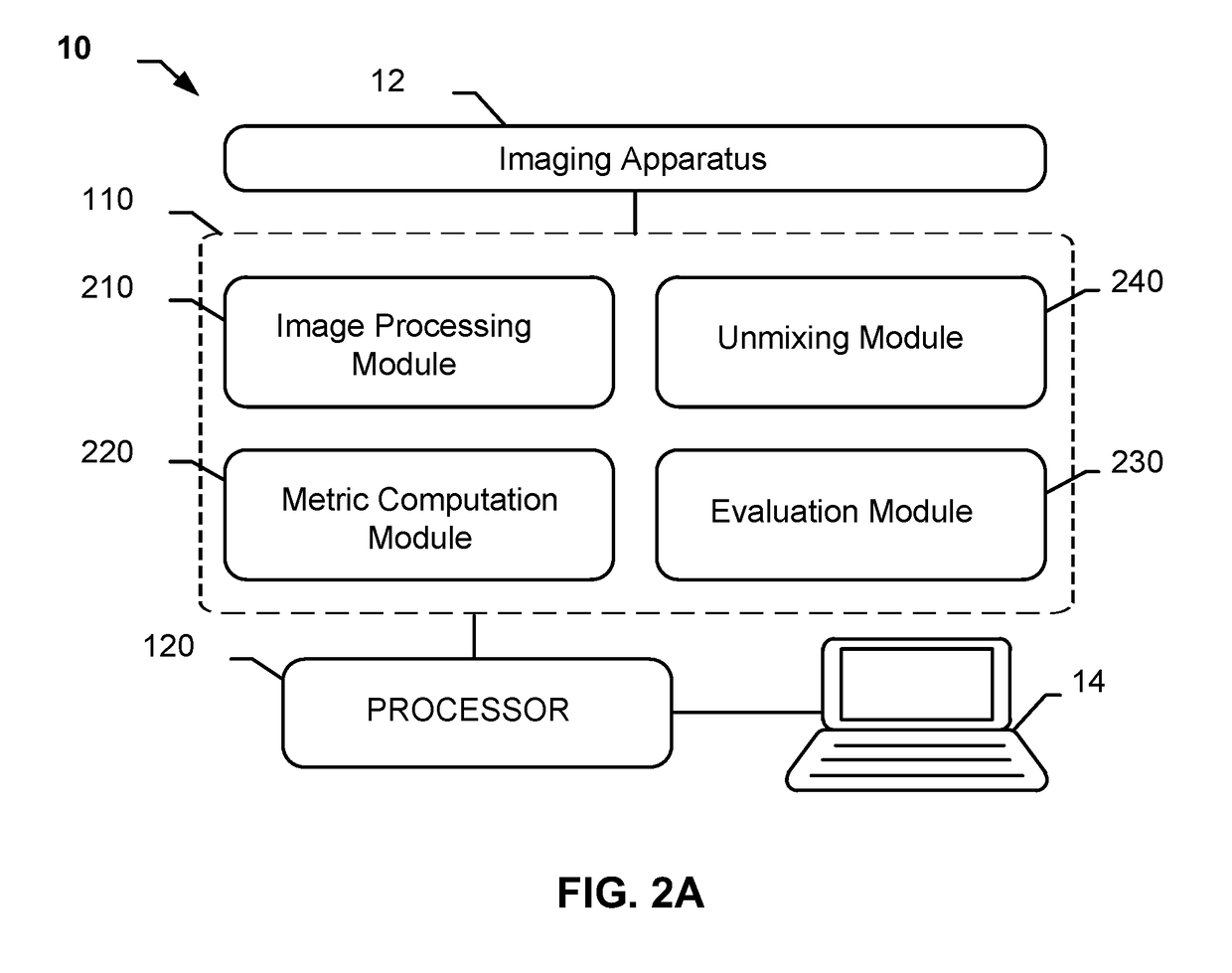Descriptive Measurements and Quantification of Staining Artifacts for In Situ Hybridization
a technology of in situ hybridization and descriptive measurement, applied in the field of descriptive measurement and quantification of staining artifacts for in situ hybridization, can solve the problem of deviating quality of stains which are analyzed, and achieve the effect of less prone to errors and repeatability
- Summary
- Abstract
- Description
- Claims
- Application Information
AI Technical Summary
Benefits of technology
Problems solved by technology
Method used
Image
Examples
example 1
eudo-Code Describing an Algorithm for Calculating the Image Entropy
[0194]Function Entropy Calculator (argument=Histogram)
[0195]Sum=O
[0196]Entropy=O
[0197]For each Bin in Histogram: Sum=Sum+Bin Frequency
[0198]For each Bin in Histogram: Probability=Bin Frequency Sum
[0199]If Probability>0.99 / Sum:
[0200]Entropy=Entropy+(−1*Probability*(log(Probability) / log(2.0))
[0201]Return Entropy
example 2
eudo-Code Describing an Algorithm for Calculating the Image Mean / Variance Ratio
[0202]Pixel Mean: Variance Calculator (argument=List of Pixel Values)
[0203]Mean Pixel Value=Mean(List of Pixel Values)
[0204]Pixel Value Variance=(Standard Deviation (List of Pixel Values))2
[0205]Mean: Variance Ratio=Mean Pixel Value / Pixel Value Variance
[0206]Return Mean: Variance Ratio
example 3
paration and Imaging
[0207]DIG=3-[(3S,5R,8R,9S,10S,12R,13S,14S,17R)-3,12,14-trihydroxy-10,13-dimethyl-1,2,3,4,5,6,7,8,9,11,12,15,16,17-tetradecahydrocyclopenta[a]phenanthren-17-yl]-2H-furan-5-one;
[0208]DNP=2,4-dinitrophenyl
[0209]Four different slides with sections from the same tissue micro-array (TMA) block were evaluated for 5′3′ ERG FISH stain quality with quantum dot 565 and quantum dot 655. The quantum dot reporting particles were conjugated to either anti-DNP hapten or anti-DIG hapten such that one wavelength quantum dot (e.g., 655 nm) would be targeted to a DNP labeled FISH probe, and the other quantum dot (e.g. 565 nm) would be targeted to a DIG labeled FISH probe. In this particular example, the level of non-specific binding of quantum dot 655 (labeling the 3′ probe) was compared using quantum dot 655 conjugated to anti-DIG monoclonal antibody and quantum dot 655 conjugated to anti-DNP monoclonal antibody. Quantum dot 565 (5′ Probe) was conjugated to anti-DIG in the case whe...
PUM
| Property | Measurement | Unit |
|---|---|---|
| wavelengths | aaaaa | aaaaa |
| wavelengths | aaaaa | aaaaa |
| depth of field | aaaaa | aaaaa |
Abstract
Description
Claims
Application Information
 Login to View More
Login to View More - R&D
- Intellectual Property
- Life Sciences
- Materials
- Tech Scout
- Unparalleled Data Quality
- Higher Quality Content
- 60% Fewer Hallucinations
Browse by: Latest US Patents, China's latest patents, Technical Efficacy Thesaurus, Application Domain, Technology Topic, Popular Technical Reports.
© 2025 PatSnap. All rights reserved.Legal|Privacy policy|Modern Slavery Act Transparency Statement|Sitemap|About US| Contact US: help@patsnap.com



